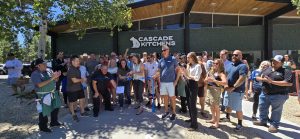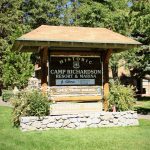No more cows in Meiss Meadow
A controversial battle over cattle grazing in Meiss Meadow ended Monday with an announcement by the U. S. Forest Service banning such practices.
Maribeth Gustafson, forest manager for the Lake Tahoe Basin Management Unit of the Forest Service, did not re-issue a cattle grazing permit which expired at the end of the year for the allotment south of Meyers.
“We got to this decision incrementally, as monitoring data indicated we needed to try different grazing strategies,” said Linda Massey, public affairs officer for the Forest Service.
The agency is legally required to comply with water quality objectives set by the Lahontan Regional Water Quality Control Board. Data collected by the Forest Service and Lahontan showed repeated violation of standards for fecal coliform bacteria.
In a letter to permittees, the Forest Service advised they had “determined that a viable grazing strategy cannot be developed that would likely meet the state mandated water quality standards and our riparian and wildlife habitat standards.”
The League to Save Lake Tahoe supported the Forest Service decision.
“We should not allow the destructive process of cattle grazing to continue upstream when we’re spending millions of dollars to save Lake Tahoe downstream,” said Heidi Hill Drum, communications director for the league.
“The league has been fighting this for years,” Drum said. “Our position is that a basin-wide ban on cattle grazing should be in place.”
Cattle grazing has been permitted in the 12,000 acre Meiss Allotment since it became a part of the National Forest Service system. Members of the Doug Joses and James Cuneo families have grazed their cattle for years on the land. They did not immediately respond to phone messages.
There are three remaining areas in the basin that allow cattle grazing.
In the past the Forest Service tried various restrictions on grazing the area, trying to avoid an outright ban. In the summer of 2000 they declared a “rest,” not allowing any grazing. In 2001, they cut the allowable number of cattle grazing the area in half, from around 400 to around 200. That year the grazing area was limited to only Meiss Meadow, and the season for grazing was shortened. When these measures failed to result in compliance with water standards, the Forest Service decided not to renew the grazing permits.
“The Forest Service decision is a victory for all the people who love the lake,” said Rochelle Nason, executive director for the League.
— The Associated Press contributed to this story.

Support Local Journalism

Support Local Journalism
Readers around the Lake Tahoe Basin and beyond make the Tahoe Tribune's work possible. Your financial contribution supports our efforts to deliver quality, locally relevant journalism.
Now more than ever, your support is critical to help us keep our community informed about the evolving coronavirus pandemic and the impact it is having locally. Every contribution, however large or small, will make a difference.
Your donation will help us continue to cover COVID-19 and our other vital local news.










